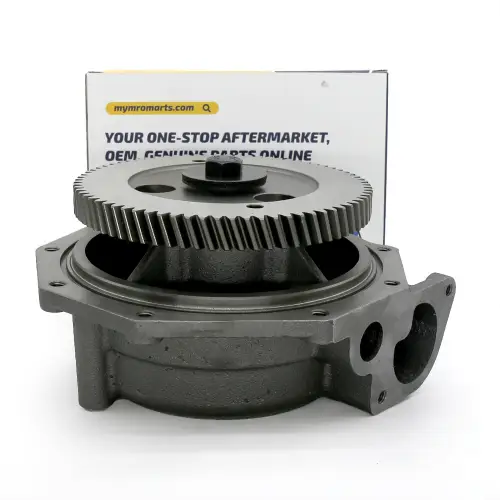How To Release Air From Water Pump
In order to maintain the engine temperature within a suitable range, the engine water pump continuously delivers coolant from the radiator to the engine, thereby extending the performance and life of the mechanical equipment. However, water pumps also often suffer from air getting into the pump and leaking water pump gaskets. In this article, MyMROmarts will discuss two key issues, how to remove air from a water pump and how to prevent water pump gasket leakage, which are very important to maintain the normal operation of the water pump.
How To Release Air From Water Pump
Problem Analysis
Air getting into the engine water pump is a common problem. The two main reasons why air can get into the water pump are leaks and air bubbles. Leaks are usually caused by a poor pump seal or loose connections, while bubbles are caused by gas being sucked into the system or the poor design of the pump itself.
Consequences Of The Problem
When air enters the water pump, it affects the flow performance of the coolant, thereby reducing the flow rate of the coolant. This will cause the engine temperature to rise, even cause overheating problems, and in severe cases may even damage the engine. In addition, air may cause vibration and noise inside the water pump, affecting the stability of the engine and other diesel engine parts.
Solution-Exhaust Device
To remove air from the water pump, an exhaust device can be used. The exhaust device is usually located at a high point on the water pump so that air can be collected at the highest point and discharged. The exhaust device usually includes a valve or switch to allow manual or automatic exhaust when needed. When the water pump is started, the exhaust device will push air out of the cooling system, allowing the coolant in the water pump to flow freely.
How To Stop Water Pump Gasket Leak
A leaking water pump gasket is another common problem that can cause coolant to leak and reduce the efficiency of your cooling system. This affects the cooling effect of the water pump on the engine after the starter motor starts the engine. In order to prevent water pump gasket leakage, there are some steps you can take in advance to prevent this situation.
Regular Inspection And Maintenance
Check the water pump's condition on a regular basis, paying particular attention to the gaskets' wear and the tightness of the seals and fasteners. It's critical to repair the gaskets as soon as they show signs of wear or damage.
Install The Gasket Correctly
When replacing gaskets, it is best to follow the advice and guidance of a professional master. You need to know that proper installation is also key to preventing water pump leaks.
Choose Quality Gaskets And Seals
Use high-quality water pump gaskets and seals to improve the sealing performance of the water pump and extend its service life. Cheaper alternatives may not offer adequate durability.
Maintain Coolant
Make sure the coolant in the water pump is at the proper level and avoid excessive pressure or temperature. At the same time, replace the coolant regularly to maintain a good cooling effect.
In conclusion, keeping the water pump running properly is very important to the health of the engine. To ensure your engine is cooled effectively, it's important to address two key issues, releasing the air from the water pump and preventing the water pump gasket from leaking. Avoid water pump gasket leaks by removing air from the cooling system using a bleeder performing regular inspections, proper maintenance, and using quality gaskets and seals.
 Track Your Order
Track Your Order







